
German Shepherd Dog Breed: Information, Characteristics, and Care
Imagine a breed that combines intelligence, loyalty, and versatility in one majestic package. This is the essence of the German Shepherd – a popular dog that is not just a pet but a member of the family, a protector & a companion. They’re impressive in build and sharp in mind. Loved by dog enthusiasts worldwide, the American Kennel Club has recognized the German Shepherd since 1908, showing their long history. And in the dog world, they’re really respected, ranking 4th out of 201 breeds by the AKC. Their popularity is clear, with 7,211 German Shepherds registered in 2022. by The Kennel Club.
Let’s dive into the world of the German Shepherd Dog Breed. We’ll uncover the secrets behind their lasting fame and learn the best ways to care for these incredible dogs.
The information provided herein is for informational purposes only. Please refer to our disclaimer for more details..
- Quick Facts
- Breed Overview
- German Shepherd Dog History
- German Shepherd Appearance
- German Shepherd Size, Weight & Lifespan
- German Shepherd Personality & Temperament
- German Shepherd With Children and Other Pets
- German Shepherd Grooming & Care
- German Shepherd Diet and Nutrition
- German Shepherd Training
- German Shepherd Exercise Needs
- German Shepherd Health
- Ideal Owner
- How To Get German Shepherd
- Conclusion
Quick Facts
Image credits: Anna Dudkova
- Size: Medium to large-sized
- Weight: Males: 65-90 pounds (29-41 kg) | Females: 50-70 pounds (23-32 kg)
- Height: Males: 24-26 inches (61-66 cm) | Females: 22-24 inches (56-61 cm)
- Lifespan: 7 to 10 years
- Types: There are Working and Show lines. American lines focus more on show qualities – while German lines are about working skills.
- Families: They bond well with families and are good with kids when they’ve been socialized. They might be a bit wary of strangers.
- Appearance: Strong build, standing ears, dark eyes shaped like almonds. They have a medium-length double coat in colors like black & tan, sable, silver, and even white.
- Temperament: Loyal, protective, intelligent, and trainable. Requires a structured environment and consistent training.
- Other Pets: They can get along with other pets if they’re socialized early on.
- Barking: They tend to bark, especially when they’re bored or need to alert about strangers.
- Training: They’re very trainable, needing consistent, positive methods and early socialization.
- Exercise Required: They have a lot of energy and need about 2 hours of exercise daily – including physical and mental activities.
- Owner Requirement: Active lifestyle, time for exercise and training, companionship.
- Grooming: Regular brushing is needed to manage shedding. They also need occasional baths, nail trims, and care for their ears and teeth.
- Health: Prone to hip and elbow dysplasia, bloat, degenerative myelopathy, exocrine pancreatic insufficiency, allergies, and certain cancers.
- Nutrition: They need a balanced diet. Puppies need special attention for growth, while adults’ diets depend on size, activity, age, and health.
- Cost: Adopting costs $300 to $1,000 & buying from breeders can be $1,000 to $5,000.
- Kennel Club Group: Herding
Breed Overview
The German Shepherd Dog (GSD), also called the Alsatian in Great Britain and parts of Europe, is a breed many people admire. These dogs are medium to large in size. They’re known for being smart, loyal, and protective – which makes them great for jobs like police work, search and rescue & as service dogs.
Originally bred for herding, GSDs are very energetic. And they need a lot of physical activity and mental challenges to stop bad behaviors like too much barking or chewing things they shouldn’t. Their strong build, erect ears, and alert demeanor make them not only effective guard dogs but also loving family pets, given their affectionate and versatile nature.
But, people thinking about getting a GSD should know what the breed needs. And this includes having a big yard to exercise in and dealing with their frequent shedding. Training and early socialization are really important to control any aggression and to help them get along with other pets. Additionally, the dog’s lineage influences its traits:
- American-bred ones are more for show
- While German-bred ones are good at both looking nice and also as a working breed group.
German Shepherd Dog History
Image credits: ana arroyo
The German Shepherd Dog, a breed synonymous with versatility and intelligence, has an illustrious history dating back to the late 19th century. Captain Max von Stephanitz, a former German cavalry officer – wanted to create the best German herding dog. He studied different herding dogs across Germany.
In 1899, at a dog show, he found a wolf-like dog named Hektor Linksrhein. Impressed by Hektor’s strong body and smart mind, von Stephanitz got him, renamed him Horand v Grafeth, and started the Verein für Deutsche Schäferhunde (Society for the German Shepherd Dog). And, this was the start of the breed as we know it.
Initially bred for herding, the industrialization of Germany saw von Stephanitz pivot the breed’s focus towards police and military roles, leveraging his military connections to gain government endorsement. During World War I, these dogs proved their worth in various jobs like helping the Red Cross & delivering messages.
The breed’s move to America started in the early 1900s. And the American Kennel Club (AKC) recognized it in 1908. But, because of anti-German feelings during World War I, the breed was temporarily called “Shepherd Dog” in the U.S. & “Alsatian Wolf Dog” in England. The AKC went back to its original name in 1931.
Von Stephanitz cared a lot about keeping the breed’s quality. In 1922, he started stricter quality checks to fix problems like bad temperament and dental issues. After World War II, there was a split between American- and German-bred German Shepherds. American breeders focused on how they looked for shows – while German breeders kept up the breed’s working skills. Some U.S. breeders brought back German working dogs to improve their practical abilities.
German Shepherds have done more than military and police work like:
- They’ve helped people who can’t see
- Detected substances
- And even became movie stars, like Rin Tin Tin.
Their bravery was seen during the 9/11 attacks, where they worked as search and rescue dogs at the World Trade Center. The history of this breed shows how adaptable, intelligent & dedicated they are, making them loved pets and great workers.
German Shepherd Appearance
Image credits: Andrew Lancaster
The German Shepherd Dog stands out for its elegant and strong look, making it one of the most well-known dog breeds.
Let’s look at their special features:
- Size and Build: Falling in the medium to large dog category, German Shepherds display a robust build that exudes both power and grace.
- Ears and Eyes: When they’re born, their ears are floppy and soft. By about 5 months – their ears stand up and point forward when they’re alert. And their eyes are dark, shaped like almonds & convey an intelligent, eager expression.
- Nose and Muzzle: They have a noticeable black, square nose and a long, straight muzzle.
- Coat Characteristics: Their medium-length double coat is usually dense and straight, sometimes a bit wavy. The outer coat is water-resistant. And they also have a thick undercoat that’s good for different climates.
- Coat Colors: You can find them in many colors, like:
- Black and tan
- Black and cream
- Black and red
- Sable
- Silver
- And even white.
- Tail: Their tail is bushy with a slight hook, looking like a saber.
German Shepherd Size, Weight & Lifespan
The German Shepherd exhibits a notable size and weight range, distinguishing males from females.
- Height: Males are usually 24-26 inches (61-66 cm) tall – while females are a bit shorter, at 22-24 inches (56-61 cm).
- Weight: There’s a distinct difference in weight between genders. Males weigh about 65-90 pounds (29-41 kg) & females are lighter, weighing 50-70 pounds (23-32 kg).
- Lifespan: Even with their muscular build, German Shepherds have a modest lifespan of about 7-10 years.
These sizes and weights show their background as herding and working dogs, mixing agility with strength.
German Shepherd Personality & Temperament
Image credits: Katelyn MacMillan
The German Shepherd, renowned for its intelligence and loyalty, is a breed with a multifaceted temperament and personality. Key aspects of the German Shepherd’s temperament include:
- Loyalty and Protectiveness: They’re really loyal to their families and form strong bonds. But, they can be wary of strangers & have a strong instinct to guard.
- Intelligence and Trainability: These dogs are super smart and eager to learn – making them easy to train. And, it’s important to train them consistently to use their energy and intelligence in good ways.
- Need for Leadership: As pack animals, they do best when they see their owner as the leader. And if training is inconsistent or there’s no clear leader, they might develop behavior problems.
- Variability in Temperament: Their personality can vary based on their background.
- Working-line German Shepherds are driven and might need an experienced owner.
- Show-line ones might be better for families.
- Social and Engaged Nature: They love being around people and don’t like being alone too much, which can cause separation anxiety.
It’s important to understand and respect these traits to have a good relationship with a German Shepherd. This helps them grow up to be well-behaved and obedient.
German Shepherd With Children and Other Pets
German Shepherds make great bonds with kids and with other pets if they’re trained and socialized well. They are protective and gentle with kids – especially if they’ve been around children since they were puppies. However, due to their size, care should be taken around toddlers & small children to avoid accidental bumps.
With other pets, German Shepherds can get along if they meet them early in life. They can live peacefully with other dogs & even cats, but they need to be socialized from a young age.
In contrast, introducing an adult German Shepherd to a home with existing pets may require more effort, particularly if they lack prior socialization experience. And in these cases, getting help from a professional trainer or rescue organization can be really invaluable. They can make the introduction smoother and safer for everyone.
German Shepherd Grooming & Care
Image credits: Anna Dudkova
Taking care of a German Shepherd means doing some specific grooming tasks to keep them healthy and looking good:
- Bathing: Bathe them 2-3 times once every month. You can usually just brush out dirt from their coat. In this way, you don’t wash away important oils from their coat. Bathing them a bit more during times when they shed a lot can help reduce loose hair.
- Nail Care: It’s important to cut their nails every month unless they naturally wear down from being active. Long nails can break easily and hurt the dog.
- Ear Care: Check and clean their ears every week with a damp cotton ball and ear cleaner made for dogs. But, don’t clean them too much, which can lead to bacterial growth & infections.
- Dental Hygiene: German Shepherds naturally keep their teeth clean by chewing. Giving them strong chew toys or bones helps keep tartar off, especially on their back teeth. Complement this with periodic brushing using a soft toothbrush and dog-specific toothpaste.
- Skin and Coat Health: When you’re grooming them, look if their coat is shiny or dull. Dull hair could mean they’re not getting the right nutrients. And their coat’s oils are good for their skin, so don’t bathe them too much.
- Eye Care: Keep an eye on their eyes for any changes, especially if they’re in places with a lot of sunlight. Try to keep them out of strong sun to protect their eyes.
- Shedding Management: Known as “German shedders,” these dogs shed a lot, all year round, with more shedding twice a year. Brushing them two to three times a week helps control this. And during heavy shedding periods, you might need to brush them every day.
German Shepherd Diet and Nutrition
German Shepherds, big and energetic, need a diet that’s just right for them at different ages. And it’s best to talk to a vet or a nutrition expert to figure out what to feed them & how much, general guidelines include:
- Puppy Diet: During their rapid growth phase between four to seven months, German Shepherd puppies should have a high-quality, low-calorie diet. This will regulate growth and prevent bone-related issues. Until they’re about two years old, when their joints are fully grown, keep them from too much running and jumping on hard surfaces.
- Adult Diet: Grown-up German Shepherds usually eat two meals a day – about 2 cups of dry dog food in total. Adjust this based on their size, how active they are, their age, and health. And to stop bloating, don’t give them one big meal. Add some canned food for variety and always have fresh water available.
- Portion Control and Obesity Prevention: Keep an eye on their weight to avoid obesity, which can be a health issue. Scheduled feedings help control how much they eat.
- Supplements: Think about adding joint health supplements like glucosamine, chondroitin, MSM & omega-3s. Probiotics and digestive enzymes can help their digestion and pancreas health.
German Shepherd Training
Image credits: Thirdman
Training a German Shepherd is a great experience and important for them to grow up well-adjusted adult dogs. Here’s what works best in training:
- Early Socialization: Start introducing them to different places, people, and animals when they’re puppies. This helps them become confident and easy-going as they get older.
- Positive Reinforcement: Use treats, toys, and praise to teach them. Reward good behavior and calmly fix bad behavior. And this makes the bond between you stronger and teaches them the right way to act.
- Consistent Training: German Shepherds thrive on consistency. Regular training sessions help them understand expectations and build confidence.
- Advanced Commands and Canine Sports: Teach them more than basic commands. Activities like agility, tracking, nose work, and tricks keep their minds busy and make them happy.
- Managing Vocalization: Must teach them the “Quiet” command in their obedience training to control their natural habit of barking – especially if they bark out of boredom.
German Shepherd Exercise Needs
German Shepherds, with their high energy and active nature, require ample exercise to stay healthy and content. Here’s how to keep them engaged:
- Physical Exercise: They need about 2 hours of strong exercise every day. This can be fast jogging, playing fetch, or swimming. They like discovering new places – so hiking & scent walks are excellent choices. And they can run up to 30 miles per hour, so always use a leash unless they’re in a safe area.
- Mental Stimulation: These dogs are very smart and need their minds to be busy as well as their bodies. Try games that make them think, like:
- Hide-and-seek with treats
- Or toys that give food when they solve a puzzle.
This keeps them busy and stops them from doing things like chewing or digging when they’re bored.
- Social Activities: Well-socialized German Shepherds can enjoy dog parks and outdoor adventures, which are great for both physical exertion and social interaction.
Balancing physical exercise with mental enrichment is key to maintaining a happy & healthy German Shepherd.
German Shepherd Health
German Shepherds are strong dogs, but they can have some health conditions. Knowing about these early on helps in taking care of them:
- Hip and Elbow Dysplasia: These are inherited issues and are common in large breeds of dogs. Hip dysplasia happens when the thigh bone doesn’t fit well into the hip joint. And elbow dysplasia is when the bones in the elbow don’t align right. Both can cause pain and arthritis. It’s a good idea to get them screened for these conditions.
- Gastric Dilatation-Volvulus (Bloat): A serious condition where the stomach distends and twists – requiring immediate veterinary intervention. Symptoms include:
- Abdominal distension
- Excessive salivation
- Retching
- And rapid heart rate
- Degenerative Myelopathy (DM): A disease that affects the spinal cord, causing weakness in the back legs & eventually paralysis. There’s no cure, but physical therapy can help keep muscles strong.
- Exocrine Pancreatic Insufficiency (EPI): A genetic condition impairing digestive enzyme production, leading to weight loss and altered stools. Treatment includes adding pancreatic enzymes to the diet.
- Allergies: Some dogs might get allergies from things they touch or eat, shown by a lot of scratching, licking their paws, or rubbing their face.
- Cancer: They are susceptible to cancers like hemangiosarcoma and bone, lung, and intestinal cancers. Look out for signs like:
- Tiredness
- Pale gums
- Hard breathing
- Or sudden collapse
- Heart Disease: Problems like DCM (dilated cardiomyopathy), valve diseases, and heart murmurs are common. Regular heart checks are important.
- Pannus (Superficial Keratitis): An immune-mediated eye condition that can cause blindness. And it’s best to keep them away from too much sunlight and have a shaded place for them.
- Elbow Hygroma: A fluid-filled bump on the elbow, usually not painful unless it gets infected.
- Other Concerns: They can also have epilepsy, bleeding problems & diseases that affect the immune system. Many of these are genetic.
Regular check-ups with a vet are important to keep an eye on these health issues in German Shepherds.
Ideal Owner
Image credits: Aleksandar Mitrovic
The ideal owner for a German Shepherd is someone who leads an active lifestyle & can dedicate time to their pet’s exercise and training needs. These dogs do well with people who like being outdoors and can give them at least an hour of exercise every day. Having a yard is good – but they can also live in apartments if they get enough exercise. And if you live in the city, remember that these dogs are very alert and might get stressed by loud noises. They need company and don’t do well if left alone a lot. And they’re great with families if they’re socialized right.
How To Get German Shepherd
There are different ways to get a German Shepherd, depending on your budget:
- Rescue Organizations: To adopt, contact groups that focus on German Shepherds, like:
They can help you find a good reputable breeder and guide you through adoption. Adoption usually costs between $300 and $1,000.
- Rehoming: Sometimes owners offer their German Shepherds for free or a nominal rehoming fee – which may include essentials like food and accessories.
- Breeders: If you want to buy a puppy, you can check the AKC marketplace for AKC-registered puppies. Prices from breeders range from $1,000 to $5,000, based on things like the dog’s sex, how they look, demand & their family background.
Each option gives you a chance to bring a German Shepherd into your life, no matter your budget.
Conclusion
The German Shepherd Dog breed stands as a testament to loyalty, intelligence, and versatility. These amazing dogs offer more than just friendship. They bring strength, dedication, and love into your life. And whether you want a pet for your family, a working dog, or a true friend – it’s important to know what they need for care.
Remember, as a pet parent owning a German Shepherd is a commitment to fostering their physical and mental well-being. And, by accepting this, you and your German Shepherd will create a strong bond based on respect & love, and all your hard work will be worth it.
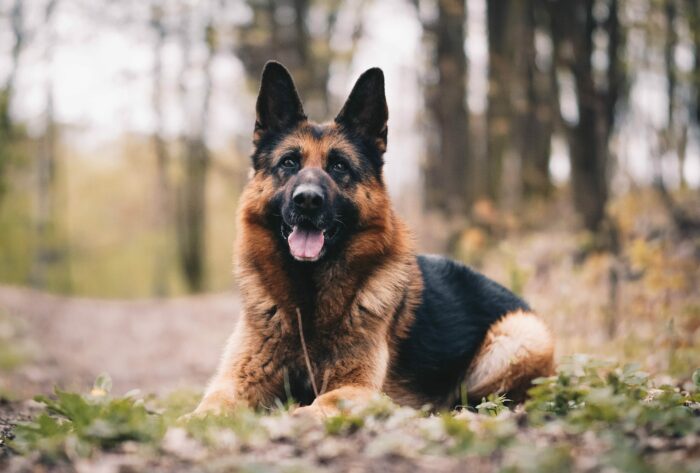
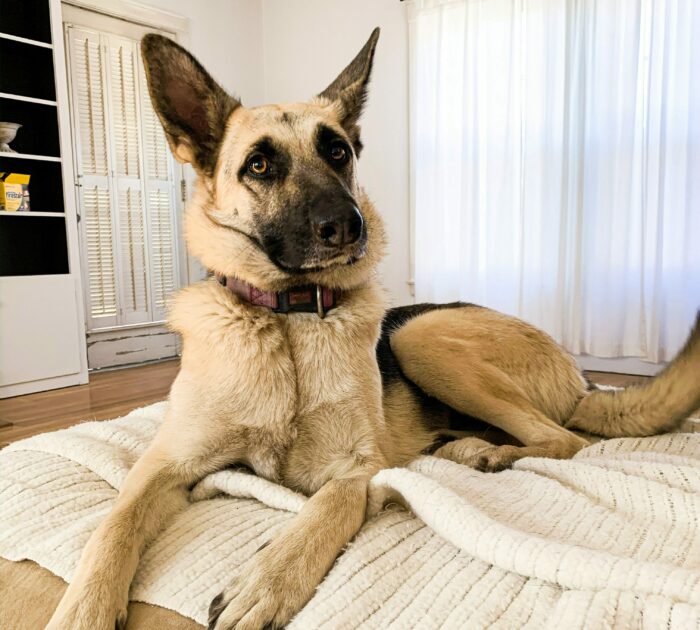
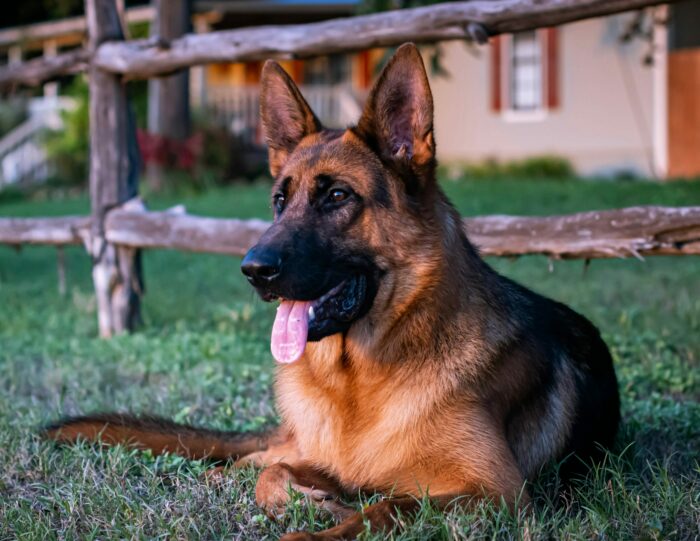
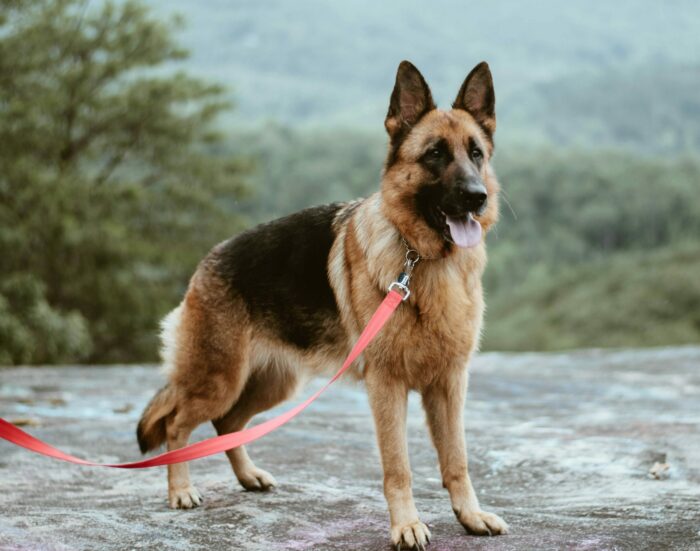
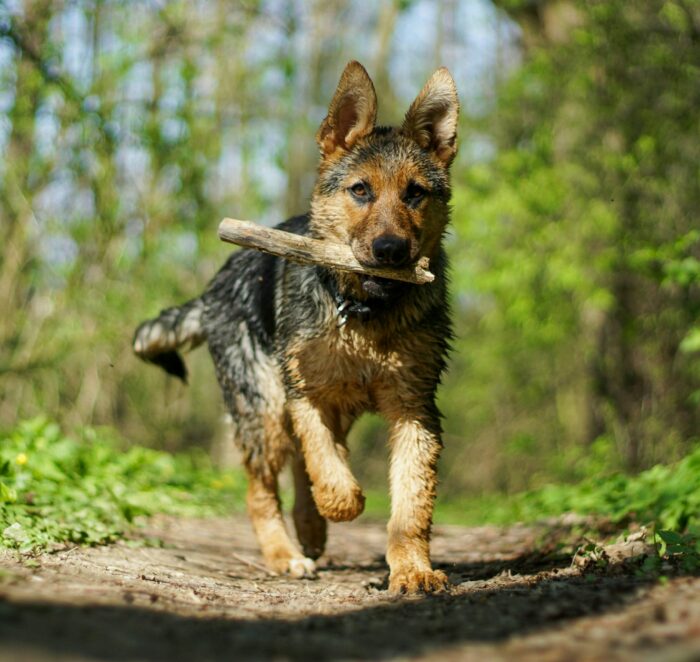
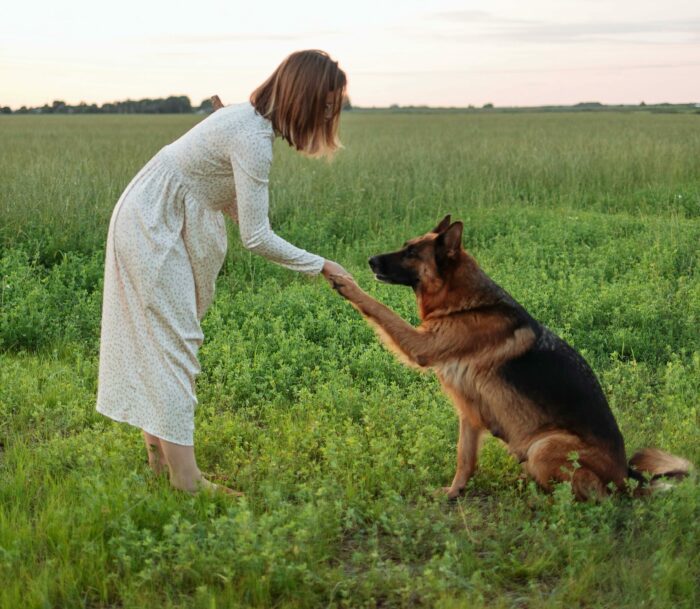




-3
0